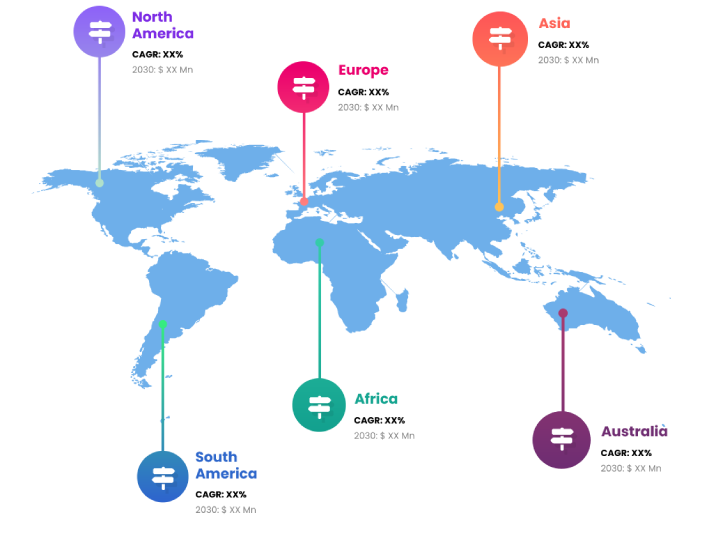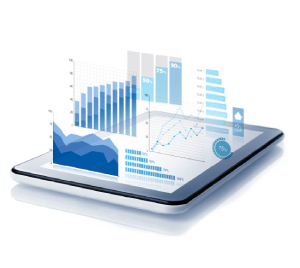The long-term goal of developing biostimulants is to help farmers respond to rising agricultural demand. As a result of biostimulants, agricultural output is enhanced both quantitatively and qualitatively. Plants or soils may be treated with biostimulants, which are combinations of chemicals, substances, and microbes, to boost crop vitality, yield, sensitivity to abiotic pressure, and quality. Biostimulants have been shown to improve crop growth and yield at all stages of the agricultural life cycle, from seed germination to harvest. Farmers use biostimulants to increase agricultural yields and quality in the face of climate change, while consumers buy them to satisfy the growing demand for organic products.

The market for biostimulants is broken down into its constituent parts in this study, with projections of future revenue and analyses of current trends provided for each segment and area. The study examines the major growth factors, opportunities, and threats that are impacting the Biostimulants market. Recent market changes and competitive strategies have been incorporated into the illustration of the competitive landscape in the market, including growth, product launch and development, collaboration, merger, and acquisition. Each subsegment of the Biostimulants market is analysed to determine the leading companies and their specific strengths and weaknesses.
Motivating Elements
Biostimulants are gaining popularity among farmers because of their ability to enhance native plant traits and better equip crops and plants to thrive in their environments. Farmers are increasingly turning to biostimulants as a result of rising public concern over crop quality and worsening temperature conditions due to climate change. Because of these factors, more businesses are entering the market, and existing ones are retooling their approaches to meet the growing need for biostimulants by producing more of them and offering more innovative products.
Limiting Circumstances
In comparison to other agricultural inputs like pesticides and fertilisers, Japan's regulatory framework for biostimulants is light. Uncertainty and slow market expansion may result if biostimulant products are not subject to clear legislation and norms. Consumer trust in biostimulant products and their widespread use could be negatively impacted by a lack of clear restrictions.
The Effects of CoVD 19
Despite the difficulties caused by the COVID-19 epidemic, this market has not been significantly affected. The market is expected to rebound in the years after the pandemic, eventually surpassing its pre-pandemic levels. After the COVID-19 pandemic broke out at the beginning of 2020, governments and businesses took extreme measures to contain the virus. National lockdowns, quarantine measures, and the declaration of self-containment zones all wreaked havoc on the supply chain by making it more difficult to get supplies, deliver goods, and collect payments on time. Order cancellations and postponements occurred in several regions as a result of the widespread pessimism about the economy. Despite an approximately 2% annual increase in sales from 2019 to 2020, the market as a whole has lost value due to uncertainty.
The Biostimulants market is divided into several submarkets based on the types of active chemicals used. The acid-based category is expected to maintain its dominant position in the market during the projected time frame. Phytohormones play a key role in activating plant metabolic processes and stimulating seed development, and amino acids have become a popular source of these hormones. Microorganisms including bacteria and fungus, as well as the chemical decomposition of animal and plant wastes in soils, produce humic compounds as byproducts. Soil humic compounds also play a significant role in the cycling of carbon and oxygen, which helps to maintain nutrient availability, boost plant output, and reduce the toxicity of agricultural pesticides and heavy metals. In addition, humic chemicals enhance pH buffering, water retention, and mineral availability (especially iron, phosphorus, and zinc). The benefits of humic acid have sparked renewed interest in incorporating humic chemicals into agricultural practises.
The Biostimulants market is broken down into submarkets based on crop type, including row crops and cereals, fruits and vegetables, turf and ornamentals, and other crops. Row crops and cereals are expected to maintain their significant market share during the anticipated time frame. This is because crops in the row (or commodity) category, such as cotton, oats, barley, millets, and soybeans, are in higher demand than in the past. The Japan market is expected to benefit greatly from the widespread cultivation of these crops. Row crops including maize, barley, and soybeans benefit from increased seed size, cell division, and harvests because to this chemical. They include amino acids, polyamines, and Indole-3-acetic acid, all of which aid in cell development and division.
Report Coverage
Global Biostimulants research report categorizes the market for global based on various segments and regions, forecasts revenue growth, and analyzes trends in each submarket. Global Biostimulants report analyses the key growth drivers, opportunities, and challenges influencing the global market. Recent market developments and Biostimulants competitive strategies such as expansion, product launch and development, partnership, merger, and acquisition have been included to draw the competitive landscape in the market. The report strategically identifies and profiles the key Biostimulants market players and analyses their core competencies in each global market sub-segments.
| REPORT ATTRIBUTES | DETAILS |
|---|---|
| Study Period | 2017-2030 |
| Base Year | 2022 |
| Forecast Period | 2022-2030 |
| Historical Period | 2017-2021 |
| Unit | Value (USD Billion) |
| Key Companies Profiled | ATLÁNTICA AGRÍCOLA, Bayer AG, Biolchim SPA, Biostadt India Limited, Koppert Biological Systems, Haifa Group, Trade Corporation International, Brandt Consolidated, Inc., Lallemand Inc., ADAMA, Syngenta, Novozymes, FMC Corporation, Valagro S.p.A., OMEX, ASL, Agrinos, and MPH among others |
| Segments Covered | • By Product |
| Customization Scope | Free report customization (equivalent to up to 3 analyst working days) with purchase. Addition or alteration to country, regional & segment scope |
Key Points Covered in the Report
- Market Revenue of Biostimulants Market from 2021 to 2030.
- Market Forecast for Biostimulants Market from 2021 to 2030.
- Regional Market Share and Revenue from 2021 to 2030.
- Country Market share within region from 2021 to 2030.
- Key Type and Application Revenue and forecast.
- Company Market Share Analysis, Biostimulants competitive scenario, ranking, and detailed company
profiles. - Market driver, restraints, and detailed COVID-19 impact on Biostimulants
Market
Competitive Environment:
The research provides an accurate study of the major organisations and companies operating in the global Biostimulants market, along with a comparative evaluation based on their product portfolios, corporate summaries, geographic reach, business plans, Biostimulants market shares in specific segments, and SWOT analyses. A detailed analysis of the firms' recent news and developments, such as product development, inventions, joint ventures, partnerships, mergers and acquisitions, strategic alliances, and other activities, is also included in the study. This makes it possible to assess the level of market competition as a whole.
List of Major Market Participants
ATLÁNTICA AGRÍCOLA, Bayer AG, Biolchim SPA, Biostadt India Limited, Koppert Biological Systems, Haifa Group, Trade Corporation International, Brandt Consolidated, Inc., Lallemand Inc., ADAMA, Syngenta, Novozymes, FMC Corporation, Valagro S.p.A., OMEX, ASL, Agrinos, and MPH among others
Primary Target Market
- Market Players of Biostimulants
- Investors
- End-users
- Government Authorities
- Consulting And Research Firm
- Venture capitalists
- Third-party knowledge providers
- Value-Added Resellers (VARs)
Market Segment:
This study forecasts global, regional, and country revenue from 2019 to 2030. INFINITIVE DATA EXPERT has segmented the global Biostimulants market based on the below-mentioned segments:
Global Biostimulants Market, By Crop Type
Row Crops & Cereals
Fruits & Vegetables
Turf & Ornamentals
Others
Global Biostimulants market, By Application
Foliar
Soil
Seed
Global Biostimulants Market, By Active Ingredients
Humic And Fulvic
Seaweed Extracts
Amino Acid
Others
Global Biostimulants market, Regional Analysis
- Europe: Germany, Uk, France, Italy, Spain, Russia, Rest of Europe
- The Asia Pacific: China,Japan,India,South Korea,Australia,Rest of Asia Pacific
- South America: Brazil, Argentina, Rest of South America
- Middle East & Africa: UAE, Saudi Arabia, Qatar, South Africa, Rest of Middle East & Africa
You will get in-depth and extensive biostimulants market market research and competitor analysis for your business to help you develop more profound insights into the biostimulants market Market.
Through INFINITIVE Data Expert is a professional Market Research services, I will identify the biostimulants market market size, demand & opportunities, growth rate, and target audience with a comprehensive analysis of your competitors.



